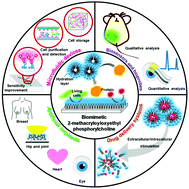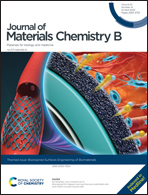Recent progress and perspectives in applications of 2-methacryloyloxyethyl phosphorylcholine polymers in biodevices at small scales
Abstract
Bioinspired materials have attracted attention in a wide range of fields. Among these materials, a polymer family containing 2-methacryloyloxyethyl phosphorylcholine (MPC), which has a zwitterionic phosphorylcholine headgroup inspired by the structure of the cell membrane, has shown an outstanding ability to prevent nonspecific protein adsorption. This property makes MPC polymers excellent materials for the construction of biocompatible surfaces and interfaces with high antibiofouling performance for both macroscopic and microscopic applications. In this review, we summarize recent progress in the design, synthesis, and application of MPC polymers for biodevices with characteristic length scales ranging from millimeters to nanometers, with a focus on their applications in microfluidic devices, biosensors/bioprobes, artificial implants, and drug delivery systems. Finally, future perspectives and challenges in this field are discussed.

- This article is part of the themed collection: Bioinspired Surfaces Engineering for Biomaterials


 Please wait while we load your content...
Please wait while we load your content...
